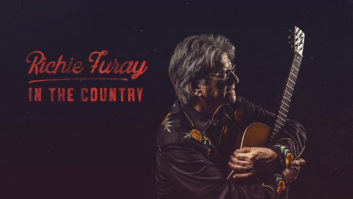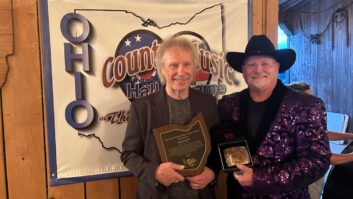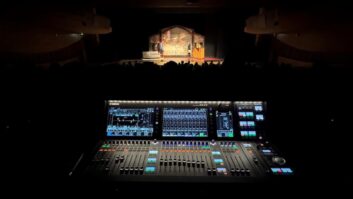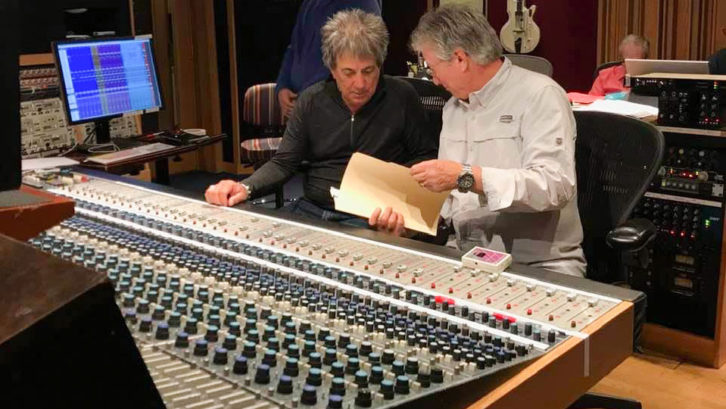
As a founding member of Buffalo Springfield and Poco, Richie Furay has long worked where rock ‘n’ roll and country music meet. But on Furay’s latest release, his first studio album in seven years, the Rock & Roll Hall of Famer goes just a little bit more country, covering classics by George Strait, John Denver, Garth Brooks and others.
When Grammy-winning producer and engineer Val Garay approached Furay about the project, titled In the Country, they began by comparing notes on which songs to include. “The first song on both our lists was John Berry’s ‘Your Love Amazes Me.’ We knew we were on the same page at that point,” Garay recalls.
Furay, Garay, orchestra and choir arranger Nic. tenBroek, the album’s co-producer, and Michael Miller, Garay’s 96K Productions partner, subsequently whittled down a list of 300 songs to 14. Garay then assembled a core cast of players— drummer Victor Indrizzo, bassist Glenn Worf, keyboardist Steve Nathan, pedal steel player Dan Dugmore, and guitarists Tom Bukovac and Chris Leuzinger—and booked time at John McBride’s Blackbird Studio in Nashville.
“I wanted to do the record as live as possible, with everybody in the room at the same time,” Garay says, including live vocals off the floor. “Richie’s singing is unbelievable. He sounds like he’s 30 years old.”
Furay and the musicians tracked the basics for the 14 songs in four days in Blackbird’s A room. Garay flipped the script on the typical setup in A, putting the piano in the large room and everyone else in the smaller tracking space and iso booths, enabling better visual communication through the control room glass. “It’s a little dead [in the smaller room] so I put plywood on the floor and the walls to liven it up; it came out fantastic,” he reports.
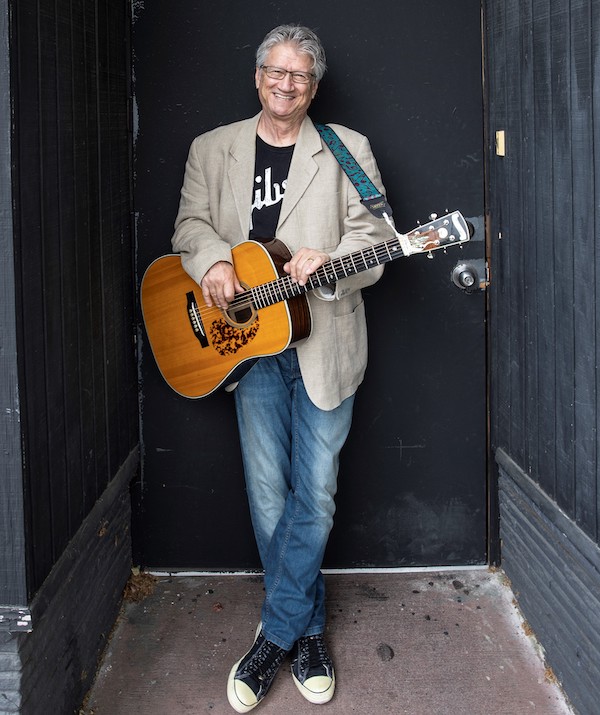
Marc Cohn’s iconic “Walking in Memphis” is written around acoustic piano and features rhythmic pushes throughout. “We wanted to square it up and do it with acoustic guitars, so I spent two weeks making a demo of it here in my studio in L.A., trying to come up with a concept that would work and still sound like the song; I think we did a spectacular job on that,” Garay says.
He rarely wavers from his go-to list of mics, he says, many of which were in McBride’s enviable microphone locker at Blackbird. “On acoustic guitars, I use an AKG C12A, which is the forerunner of the 414, but a tube version,” he says, “with an ECM-50 [Sony lav] clipped in the hole, which I always bring because nobody ever has those.”
Those mics were passed through his BAE lunchboxes, outfitted for acoustic guitar recording with API compressors and other gear. After Bukovac and Leuzinger remarked on the sound quality of their acoustics, which form the bedrock of the album, other engineers kept coming by to take photos of his setup, Garay laughs.
“I’ve always used Telefunken 251s on drums; I used them on all three toms and the overheads,” he continues. “I brought my own [electric] guitar mics, a Shure SM53 that most people don’t have. And I brought a pair of speakers, my custom NS10s, which we’re going to start manufacturing next year.”
The album was tracked in October 2019, but one Covid delay after another meant that the mix, which Garay did at his Barn Studio in Topanga [L.A. area] didn’t take place until October 2020. “It was supposed to be released in July 2021,” he adds, “but we couldn’t get the vinyl done, so it came out in July 2022. But we got a record deal with BMG in the middle of Covid, which I thought was pretty spectacular.”
There was one final challenge, he says: “The hardest part was getting the mastered versions to sound like the 192k mixes. Eric Boulanger at The Bakery in L.A. did a masterful job. We didn’t really add any EQ when we mastered it; the biggest part of the process was dithering it down to 44.1. And the vinyl sounds fantastic.”
